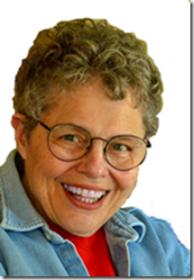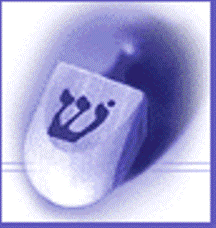 Consider This
Consider This
By
LC Van Savage
Dreidel Dreidel! I Made It Out Of Clay!
Rosh Hashanah; Yom Kippur; Sukkot; Shemini Atzeret; Simchat Torah;
Chanukkah; Tu B’Shevat; Purim; Pesach (Passover); Lag B’ Omer; Shavu’ot;
Tisha B’Av. Are they not the most beautiful looking and sounding words?
Yes. They are Jewish Holidays. I don’t know when they happen because it seems that non-Jewish holidays are celebrated in over-done excess, such as Christmas and Easter, but Jewish Holidays are not so well known. At least to non-Jews. Why is that? Didn’t Pope Someone call Judaism “Christianity’s big brother”? It’s really been around a long, long, long time, so how come not so many people know about Jewish holidays?
Am I Jewish? No. I wanted to be but they wouldn’t take me. I begged. They showed me the thousands of things I’d have to memorize. I instantly stopped begging. It became a mutual decision; they politely refused, I gratefully ran.
But I never got a chance to learn about the dreidel, a small, simple object that’s always held my fascination, considering the largesse most kids get at Christmas. I used to worry that Jewish kids for their holiday got only a dreidel, whatever it was, while the non-Jewish kids got overloaded with stuff they didn’t need, and that bothered me. I understood about the 8 days/8 candles and wondered, as a child, if my Jewish chums got one dreidel per day, and then what would they do with eight?
dreidels? I knew the famous two lines of the song about a
dreidel; “Dreidel! Dreidel! Dreidel!/ I made it out of clay!”
And that’s it. I’ve never heard the rest of that small happy song.
So I went on the Internet to learn about the dreidel and I’ll tell you what I found out about that small, significant, ancient four-sided spinning top, word-for-word, giving credit where it’s due.
Ms. Lisa Katz who spearheads a newsletter called “Your Guide to Judaism” says about this little object: “ THE ANCIENT CONNECTION: A dreidel (also spelled dreidl or draydel) is a four sided spinning top with a different Hebrew letter on each side. The game of dreidel is traditionally played during the Jewish holiday of Chanukkah, also spelled Hanukkah, also spelled Chanukah.
“Some people maintain that the dreidel game goes back to the time of the Greek-Syrians and this is integrally connected to the Chanukkah holiday. Since the Greek-Syrians prohibited the Jews from studying Torah, the Jews had to find a way to hide their Torah learning, so they used the dreidel as a decoy. When they saw the Greek-Syrians coming, the Jews would hide their books, take out their dreidels and trick the Syrians into thinking they were just playing a game.
“And then there’s the theory that the dreidel’s true source is European. Hence, THE EUROPEAN CONNECTION: In Europe, a gambling game with a spinning top has been played for centuries by various people in various languages. In England and Ireland, the game of totum or teetotum, first mentioned around 1500, was especially popular at Christmastime. The Germans also liked to play a gambling game with a spinning top.
“It is believed that the Jewish game of dreidel is a Judaicized version of the German gambling game, the Yiddish word “dreidel” being derived from the word “drehen” which means “to spin.”
“The letters on the four faces of the gambling toy, which were mnemonic for the rules of the game, varied in each nation. The letters on the English spinning top were: T for Take, H for Half, P for Put, and N for None. In the German game, the letters were: N for Nichts (nothing), G for Ganz (all), H for Halb (half), and S for Stell (put).
The Hebrew letters on the dreidel seem to have come directly from the German gambling toy: Non for Nicht, Gimel for Ganz, Hay for Halb and Shin for Stell. And, in an effort to link the game to the celebration of Chanukkah, the Hebrew letters Nun, Gimel, Hay and Shin were said to stand for the phrase ‘Nes Gadol Haya Sham’ which means, ‘a great miracle happened here.’
The ISRAELI CONNECTION; with the birth of Israel and the revival of the Hebrew language, Israelis called the dreidel a sivivon from the Hebrew word ‘sovev’ which means ‘to turn’ and the four sides still translate to ‘a great miracle happened here.’”
Here’s an even better description of the dreidel, lifted directly from the Internet. It is a four-sided spinning top with a Hebrew letter inscribed on each side. In America the letters stand for "A Great Miracle Happened There". In Israel the letters mean "A Miracle Happened Here". Each player receives a given number of coins or candy pieces. Before spinning the dreidel, each player puts a fixed proportion of the amount received into the "kupah" or kitty. Each player in turn spins the dreidel. When the dreidel falls, it will fall on one
of the 4 letters. According to the letter, the following will happen:
Nun - no win / no lose
Gimmel - take all (from the kitty)
Heh - take half (from the kitty)
Peh or Shin - lose (what you deposited)
The game continues until players have run out of 'funds' or it is agreed to stop (anyone losing all funds is out of the game). The dreidel game was popular during the rule of Antiochus before the Maccabees' revolt, a time when soldiers executed any Jews who were caught practicing their religion.
When pious Jews gathered to study the Torah, they had the top ready in case they heard soldiers approaching. If the soldiers appeared, they would hide the holy scriptures and pretend to play with the dreidel.
And lastly, finally, I found all the words to the song that’s haunted me all these years. Here goes:
CHANUKAH DREIDEL SONG
SING THE DREIDEL SONG WHILE YOU PLAY
THE DREIDEL GAME....
I have a little dreidel
I made it out of clay
And when it's dry and ready
Then dreidel I shall play
CHORUS
Oh dreidel dreidel dreidel
I made it out of clay
And when it's dry and ready
Then dreidel I shall play
It has a lovely body
With legs so short and thin
And when it is so tired
It drops and then I win!
CHORUS
My dreidel's always playful
It loves to dance and spin
A happy game of dreidel
Come play now, let's begin!
CHORUS
Here’s how the game is played:
How to Play-
Step 1 - Each player puts one token into the pot.
Step 2 - Each player takes turns spinning the Dreidel.
Step 3 - Depending on the way the Dreidel falls the player responds
accordingly.
Nun - Nisht - the player collects nothing from the pot.
Gimmel - Gantz - the player gets it all.
Hey - Halb - The player collects half of the pot.
Shin - Shtel - The player sets one of his own items into the pot.
Step4 - First player to reach 0 tokens loses.
 And now we know about the history of the famous little
dreidel. I beg forgiveness of any Jewish folks out there if I’ve
gotten any of this wrong. I wish you and the world Happy Chanukkah.
LINKS:
And now we know about the history of the famous little
dreidel. I beg forgiveness of any Jewish folks out there if I’ve
gotten any of this wrong. I wish you and the world Happy Chanukkah.
LINKS:
Click on author's byline for bio and list of other works published by Pencil Stubs Online.
Email LC at lcvs@suscom-maine.net
| 



